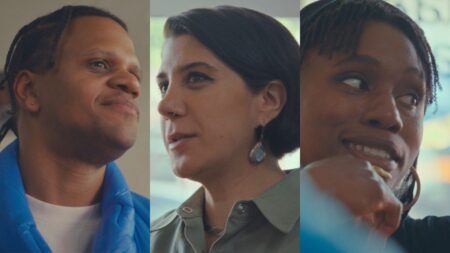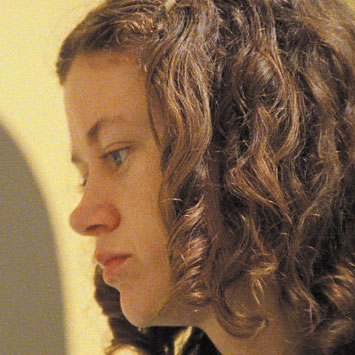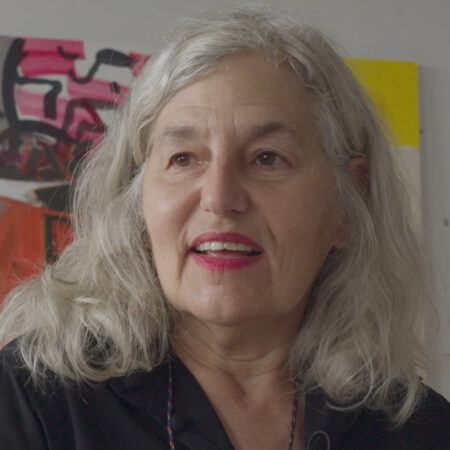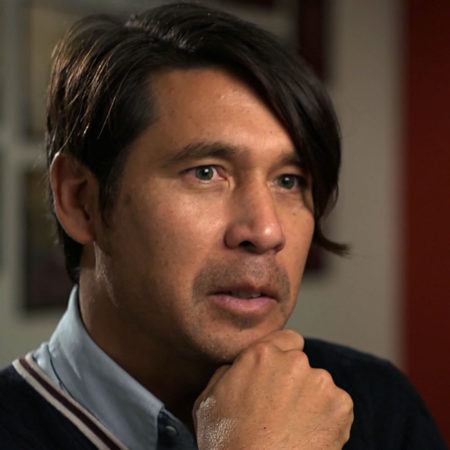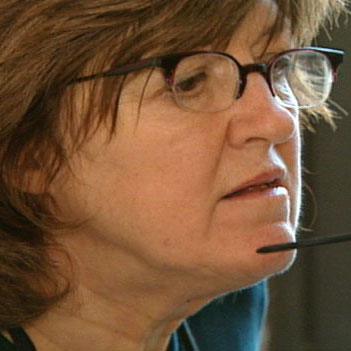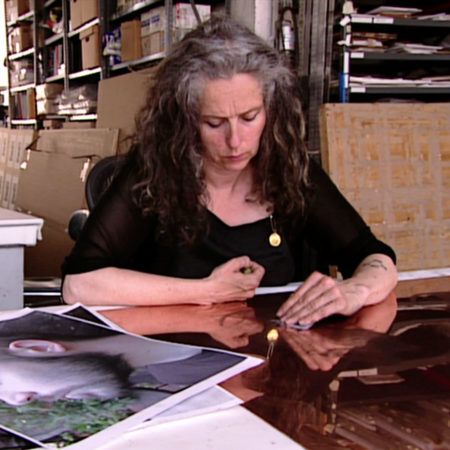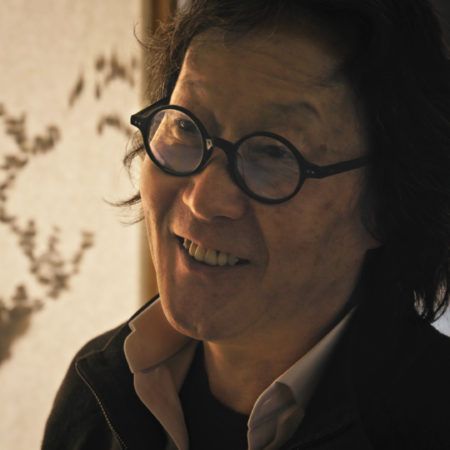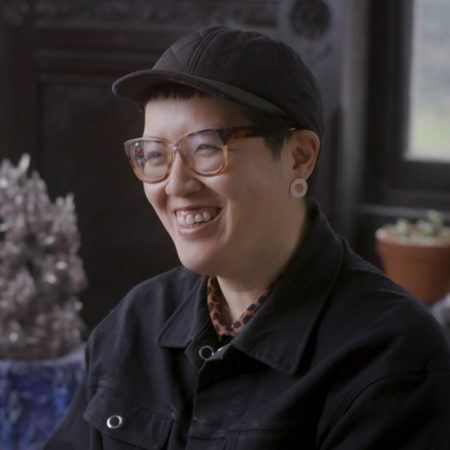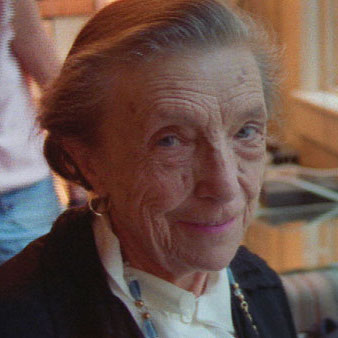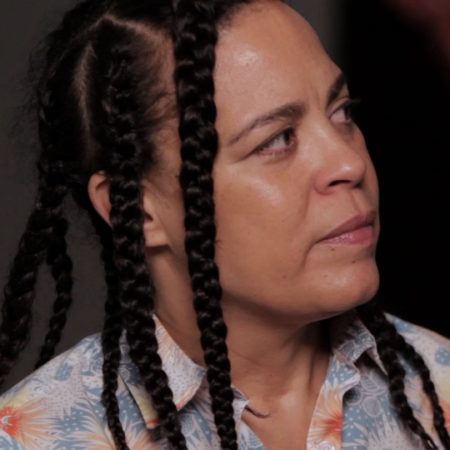Results 1–10 of 19
Margaret Kilgallen
Margaret Kilgallen was born in 1967 in Washington, D.C., and received her BA in printmaking from Colorado College in 1989. Shortly afterward, the artist moved to San Francisco, where she took up surfing and immersed herself in the Mission District street scene. Kilgallen was influenced by the hand-painted signs and colorful murals she saw while biking around her Mission District neighborhood. Additionally, her early experiences as a librarian and bookbinder in the San Francisco Public Library helped the artist develop an encyclopedic knowledge of American folk signs, printmaking, and letterforms. Working on found and salvaged material and graffiti, Kilgallen created works that highlighted the beauty of everyday life.
Amy Sillman
Amy Sillman was born in Detroit, MI in 1955 and is currently based in New York City, NY. The artist received her BFA from the School of Visual Arts in 1979, and later her MFA from Bard College in 1995. In her decades-long career, Sillman has developed a practice that defies neat categorization as she builds tensions between binaries, mediums, histories, and styles. Encompassing painting, drawing, printmaking, animation, zine-making, and writing, the artist both borrows from and complicates art historical periods and schools. Known for her process-based paintings that move ambivalently between figuration and abstraction, the artist approaches the medium as an endeavor that is simultaneously intuitive and formal, bodily and thought-based, material and conceptual.
Barry McGee
Barry McGee was born in 1966 in San Francisco, California, where he currently lives and works. He received his BFA in painting and printmaking from the San Francisco Art Institute in 1991. Taking inspiration from his upbringing in the Bay Area, folk and craft art, Mexican Muralists, geometric abstraction, and cartoons, McGee’s work balances the formal concerns of fine art with populist representations and communal modes of working. In doing so, he creates a body of work that combines the disparate worlds of street art and fine art. Through his drawings, paintings, and mixed-media installations, the artist creates a visual lexicon that addresses the struggles of contemporary urban life, looking toward his local community while building a world of his own characters, monikers, and motifs.
Vija Celmins
Vija Celmins received international attention early on for her renditions of natural scenes—often copied from photographs that lack a point of reference, horizon, or discernable depth of field. Armed with a nuanced palette of blacks and grays, Celmins renders these limitless spaces—seascapes, night skies, and the barren desert floor—with an uncanny accuracy, working for months on a single image. Celmins has a highly attuned sense for organic detail and the elegance of imperfection. A master of several mediums, including oil painting, charcoal, and multiple printmaking processes, Celmins matches a tangible sense of space with sensuous detail in each work.
Kiki Smith
In the 1980s, Kiki Smith literally turned the figurative tradition in sculpture inside out, creating objects and drawings based on organs, cellular forms, and the human nervous system. This body of work evolved to incorporate animals, domestic objects, and narrative tropes from classical mythology and folk tales. Life, death, and resurrection are thematic signposts in many of Smith’s installations and sculptures. The recurrent subject matter in Smith’s work has been the body as a receptacle for knowledge, belief, and storytelling.
Xu Bing
Xu Bing was born in 1955 in Chongqing, China, and grew up in Beijing. Fascinated with visual and written languages, Xu builds mixed-media installations that simultaneously evoke and subvert centuries-old Chinese cultural traditions, such as calligraphy, wood-block printing, and landscape painting scrolls. The artist asks viewers to consider how our cultural backgrounds, especially those shaped by language, fundamentally color our worldviews.
Heidi Lau
Heidi Lau was born in 1987 and grew up in Macau, China, and currently lives and works in New York City. Lau received her BFA from New York University in 2008, where she primarily studied printmaking and drawing. Dissatisfied with these mediums, the artist taught herself to make ceramics, creating works that evoke miniature architectures, funerary vessels, and creatures drawn from Taoist mythology. Building her works by hand, Lau channels and fuses her interests and influences into otherworldly objects that perforate the boundaries between the human and the spiritual.
William Wegman
William Wegman’s interests in areas beyond painting led him to photography and the then-infant medium of video. A central figure in his photography and videos, Wegman’s dog Man Ray became known in the art world and beyond for his endearing, deadpan presence. In 1972, Wegman and Man Ray moved to New York. In 1986, a new dog, Fay Ray, came into Wegman’s life; and soon thereafter another famous collaboration began, marked by Wegman’s use of the Polaroid 20-by-24-inch camera. With the birth of Fay’s litter in 1989 and her daughter’s litter in 1995, Wegman’s cast of characters grew.
Louise Bourgeois
Louise Bourgeois was born in Paris in 1911. She first studied mathematics at Sorbonne University before pursuing a degree in arts at various schools around Paris, including the Ecole du Louvre, Académie des Beaux-Arts, Académie Julian, and Atelier Fernand Léger. In 1938, she immigrated to the United States, continued her studies at the Art Students League in New York, and began making sculptures on the roof of her apartment. Bourgeois’s early sculptures were composed of groupings of abstract shapes, often carved from wood. By the 1960s, the artist began to execute her work in rubber, bronze, and stone, and the pieces themselves became larger and more referential to what has become the dominant themes of her work: her childhood, familial trauma, and loneliness.
Ellen Gallagher
Repetition and revision are central to Ellen Gallagher’s treatment of advertisements that she appropriates from popular magazines like Ebony and Our World. Initially drawn to wig advertisements because of their grid-like structure, she later realized that it was the accompanying language that attracted her. Gallagher began to bring these “narratives” into her paintings—making them function through the characters of the advertisements, as a kind of chart of lost worlds. Although the work has often been interpreted strictly as an examination of race, Gallagher also suggests a more formal reading with respect to materials, processes, and insistences. From afar, the work appears abstract and minimal; upon closer inspection, googly eyes, reconfigured wigs, tongues, and lips of minstrel caricatures multiply in detail.
